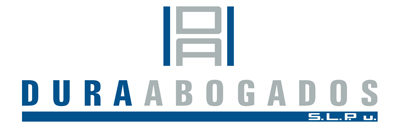Varicose capillaries are an usual condition that affects numerous people, specifically ladies. These enlarged, swollen veins can be unpleasant and also may cause pain or pain. While varicose veins can appear on different components of the body, they usually develop on the legs. Comprehending the reasons behind the formation of varicose diaform + blood vessels on the legs can aid individuals take safety nets and look for appropriate therapy. In this short article, we will discover the major elements that add to the advancement of varicose blood vessels on the legs.
1. Genetic Factors
Among the most substantial threat aspects for varicose veins on the legs is a household background of the condition. If your moms and dads or close relatives have varicose capillaries, you are most likely to create them also. This hereditary predisposition is believed to be related to damaged blood vessel walls and faulty shutoffs, which can harm the regular flow of blood and also cause the formation of varicose blood vessels.
In addition to hereditary factors, other way of life selections and circumstances can enhance the danger of establishing varicose capillaries on the legs.
- Long Term Standing or Resting: Professions or activities that include extended durations of standing or sitting can raise pressure in the leg capillaries, making them more prone to creating varicose veins. Jobs such as mentor, nursing, or working in retail often require lengthy hours on your feet, which contributes to this enhanced threat.
- Weight problems: Being obese or obese puts excess stress on the blood vessels, which can lead to the development of varicose blood vessels. Furthermore, carrying excess weight can stress the muscles in the legs, hindering correct blood circulation.
- Maternity: Hormone adjustments while pregnant can kick back the blood vessel walls and also harm the feature of valves, making pregnant ladies extra susceptible to varicose capillaries. The expanding womb likewise puts in stress on the leg capillaries, even more raising the risk.
- Aging: As we age, the veins in our legs may shed elasticity and compromise, making them much more prone to creating varicose blood vessels. In addition, the deterioration on the capillaries over time can add to the degeneration of shutoff function, triggering blood to swimming pool and also blood vessels to enlarge.
- Lack of Exercise: Regular exercise helps promote healthy blood circulation. In contrast, a less active way of living can result in inadequate circulation and boosted pressure in the leg blood vessels, contributing to the advancement of varicose blood vessels.
- Hormonal Changes: Hormonal variations, such as those experienced throughout the age of puberty, menopause, or when taking certain medications like birth control pills, can enhance the risk of developing varicose veins on the legs.
2. Various Other Adding Factors
Along with the variables stated above, there are other variables that might contribute to the development of varicose blood vessels on the legs.
Some researches suggest that exposure to extended heat, such as from warm bathrooms or saunas, may dilate the capillary and also possibly contribute to the advancement of varicose capillaries. Similarly, excessive sun direct exposure as well as the resulting damage to the skin can deteriorate the blood vessels as well as boost the possibility of varicose blood vessels.
Recent research likewise shows that particular line of work that involve heavy lifting or long term effort can raise the danger of varicose veins. The pressure positioned on the legs throughout tasks such as weightlifting or long-distance running can trigger damage to the veins, leading to varicose vein development.
3. Looking For Therapy for Varicose Veins
If you suspect you have varicose blood vessels or are experiencing signs and symptoms such as discomfort, swelling, or pain in your legs, it is vital to seek advice from a healthcare expert for an accurate diagnosis. Treatment choices for varicose capillaries vary from way of life adjustments as well as self-care steps to medical interventions, relying testoy gel crna gora on the severity of the problem.
- Way Of Life Adjustments: Easy way of living changes can assist minimize symptoms and also avoid the development of varicose capillaries. Normal workout, keeping a healthy weight, boosting the legs, staying clear of extended durations of standing or resting, and wearing compression stockings are some common suggestions.
- Sclerotherapy: This minimally intrusive treatment entails injecting an option right into the impacted blood vessel, causing it to collapse as well as eventually disappear.
- Endovenous Laser Therapy: Using laser energy, this treatment seals the affected blood vessel, rerouting blood circulation to healthier capillaries and also minimizing the look of varicose capillaries.
- Vein Stripping: In serious situations, surgical removal of the influenced veins may be essential.
Final thought
Varicose blood vessels on the legs can originate from a combination of hereditary tendency and also way of living factors. By recognizing the reasons behind varicose blood vessels, people can make informed choices to minimize their risk and look for appropriate therapy when essential. Remember to speak with a medical care expert for an accurate diagnosis and also personalized treatment strategy if you presume you have varicose veins.
